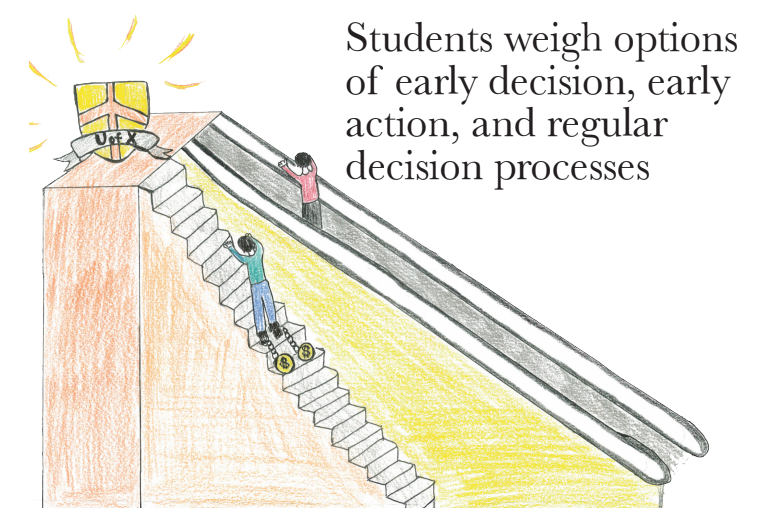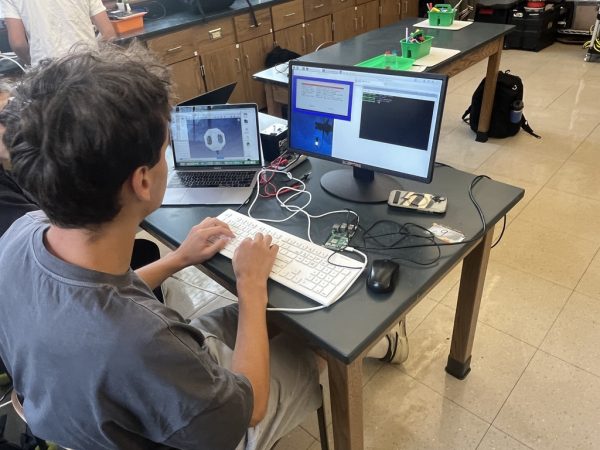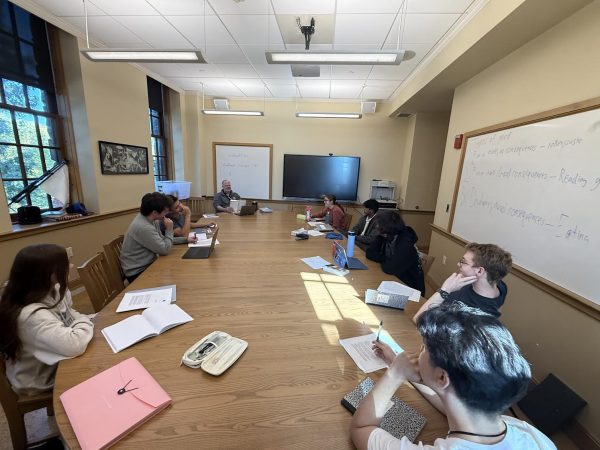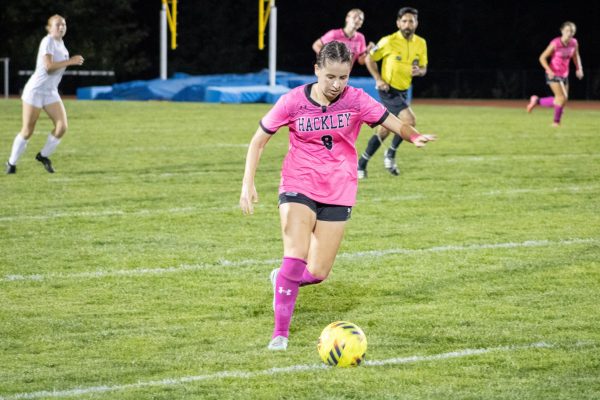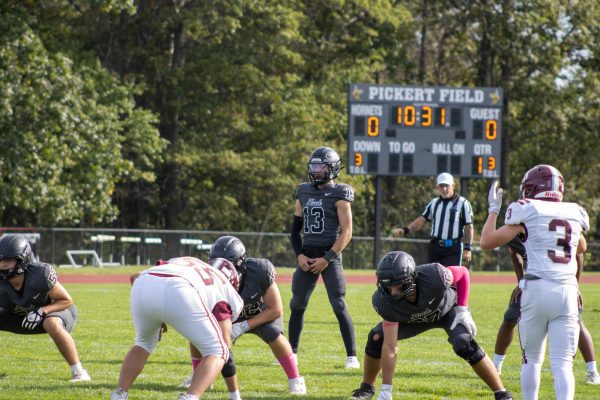Changing admissions trends influence seniors
Credit: Amy Chalan
Over the course of the past few years, America’s top colleges have become increasingly more selective. Acceptances rates have dropped because schools receive more applicants than ever before, and students find themselves working harder than ever to receive an acceptance from the college of their choice. In response to these trends, one particular tactic has become increasingly more popular: the early decision application. Although applying early decision can provide an edge, it seems that the early application process may lend an unfair advantage to the wealthy.
According to a 2018 comprehensive report from the National Association for College Admission Counseling, “between Fall 2016 and Fall 2017, colleges reported an average increase of 4% in the number of Early Decision applicants and 5% in ED admits.” Considering the thousands of applications most institutions receive, this increase in popularity of early decision applications every year is substantial.
Hackley’s college counselors — Peter Latson, Jean Nadell, and Rebecca Hall — offered insight as to why early decision applications have become so popular.
“Early decision applications have increased as students look for an advantage in an increasingly competitive admissions process. It is the ultimate demonstration of interest in a college—exclusive interest in this case,” the counseling team explained.
“Colleges have taken a greater percentage of their freshman classes from the early decision applicant pool for two primary reasons: One, It enables them to ensure the enrollment of a higher percentage of the students they admit, and two, it enables them to ensure that they enroll certain important subgroups that may be important to them, such as athletic recruits, students of variously diverse backgrounds, children of alumni, students whose families can pay the full tuition, etc.”
“In regular decision, most colleges only enroll about one in three of the students they admit; in ED, colleges know that the student they admit will enroll.”
As with many other features of college admissions, there are some common concerns from students and parents in applying to a school through a binding early admission plan: some worry that a student might feel constrained by the lack of choice. With reference to the timeline of making a choice, the College Counseling office feels that “the student will have to make a commitment to one college eventually. The question is whether or not a student is prepared to make that commitment in the fall, instead of the spring. Since Hackley students generally start the process in January of junior year and ideally visit all of the colleges they are considering before the end of the following summer, they are often ready to make a commitment come fall.”
One more widespread concern among those in the college admissions sphere, however, is that the binding nature of the early admissions process benefits the wealthy and puts those less well off at a disadvantage. The College Counseling office explained: “students with fewer educational and/or monetary resources are generally less aware of and less prepared for the early application timelines.”
Yet this concern surrounding an unfair disadvantage to those of a lower socioeconomic status carries more of a nuance at an institution like Hackley. Although not all Hackley students are necessarily “uber-wealthy” — 145 Hackley students receive some sort of financial aid — Hackley’s less wealthy students still receive the exact same counseling and education that their wealthier counterparts receive, meaning that they are both as aware and as prepared in a counselling sense for early application timelines as their wealthier counterparts.
Instead, the binding nature of the early decision process posed a problem for some seniors who will require financial aid after Hackley.
One senior in this position, who asked to be quoted anonymously due to the private nature of the subject matter, explained, “I felt restricted by the ED option because I wouldn’t be able to see my package until my decision arrived and although many of the schools on my list were ‘meet 100% of demonstrated need,’ it is up to the school’s judgment to determine how much a family needs to contribute and I did not want to put that type of financial burden on my family.”
“As a result, I decided not to apply anywhere early decision because I didn’t love any college enough to risk my family’s financial wellbeing since the majority of the colleges on my list only had ED. In the end, it did work out for me and I applied and was accepted to my top choice (early action), but the maneuvering and planning I had to do because my family could not commit to paying for me to attend a school under a binding contract was stressful and made me feel as though my family’s socioeconomic background was a burden.”
A current junior disagrees: “Because many of Hackley’s students apply to institutions considered ‘very selective,’ and the top 30 or so institutions in the country meet 100% of demonstrated need — on top of the fact that there is an early decision loophole that allows you to get out of the binding agreement if the financial aid package is not sufficient, I don’t think that a family’s financial situation really impacts the early application process at Hackley given the financial wellbeing of the caliber of schools that Hackley students apply to.”
Nevertheless, Hackley families for whom financial aid is a factor in considering colleges do tend to prefer the opportunity to consider multiple financial aid packages — although many top schools do meet 100% of demonstrated need, each school’s financial aid office has the jurisdiction to determine a family’s expected contribution — and a binding early application only allows families to consider one package. Indeed, for more “middle-class” students who might only receive some aid, considering multiple packages becomes all the more important.
For freshman, sophomores, and juniors who will require financial aid when applying to college, the early decision process may pose considerable challenges: the popularity of early decision in recent years has surged and shows no signs of slowing down. Early action might prove to be a much more viable choice for students looking for both a decision early and affordable tuition.

